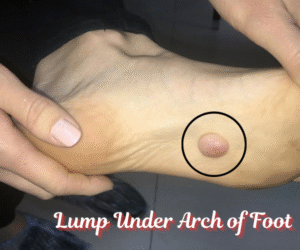A Complete Guide to Cornea Cross-Linking and Surfer’s Eye Surgery for Better Vision
Our eyes are one of the most vital organs in our body, allowing us to see and navigate the world...

Our eyes are one of the most vital organs in our body, allowing us to see and navigate the world around us. However, various conditions can affect eye health, leading to discomfort, vision impairment, and long-term complications if left untreated. Two such conditions are keratoconus, a disorder that weakens the cornea, and pterygium, also known as surfer’s eye, which leads to abnormal tissue growth on the eye’s surface.
Fortunately, medical advancements have introduced effective treatments for both conditions—cornea cross-linking to strengthen and stabilize the cornea and surfer’s eye surgery to remove the excess tissue that can obstruct vision. These procedures play crucial roles in restoring and maintaining optimal eye health.
This comprehensive guide explores the causes, symptoms, treatment options, and recovery processes of cornea cross-linking and surfer’s eye surgery, offering insights into how they can help improve vision.
Understanding Cornea Cross-Linking and Keratoconus

What Is Cornea Cross-Linking?
Cornea cross-linking (CXL) is a minimally invasive medical procedure designed to halt the progression of keratoconus, a degenerative condition that leads to corneal thinning and distortion. The procedure strengthens the corneal tissue by creating new collagen bonds through the application of riboflavin (vitamin B2) eye drops and ultraviolet (UV) light exposure.
This process enhances the cornea’s stability, preventing further weakening and bulging, which would otherwise lead to severe vision impairment. Cornea cross-linking is currently the only FDA-approved treatment for progressive keratoconus.
What Is Keratoconus?
Keratoconus is a progressive eye disorder where the normally round cornea becomes thin and cone-shaped, leading to blurred and distorted vision. The exact cause is unknown, but it is believed to be linked to genetics, excessive eye rubbing, and environmental factors.
Symptoms of Keratoconus
Blurry or distorted vision
Increased sensitivity to light and glare
Frequent prescription changes for glasses or contact lenses
Double vision in one eye
Halos around lights at night
Difficulty with night vision
If left untreated, keratoconus can progress to the point where standard glasses and contact lenses are no longer effective, potentially leading to corneal transplants in severe cases.
How Cornea Cross-Linking Works

Step-by-Step Procedure
Application of Anesthetic Eye Drops – To ensure comfort, the ophthalmologist applies numbing drops to the eye.
Riboflavin (Vitamin B2) Application – Vitamin B2 eye drops are applied to the cornea for approximately 30 minutes to saturate the corneal tissue.
UV Light Exposure – The eye is then exposed to UVA light for another 30 minutes to activate the riboflavin and create stronger collagen bonds.
Protective Contact Lens Placement – A soft contact lens is placed on the eye as a protective bandage while the cornea heals.
Types of Cornea Cross-Linking
Epithelium-Off (Epi-Off) Cross-Linking: The outer layer of the cornea is removed to allow better absorption of riboflavin.
Epithelium-On (Epi-On) Cross-Linking: The epithelium remains intact, leading to a faster recovery and reduced discomfort.
Benefits of Cornea Cross-Linking

Stops the progression of keratoconus
Strengthens and stabilizes the cornea
Minimally invasive with no major incisions
Reduces the likelihood of needing a corneal transplant
Can improve vision when combined with corrective lenses
Recovery After Cornea Cross-Linking
Mild discomfort and light sensitivity for the first few days
Blurry vision during the initial healing phase
Complete corneal stabilization takes 3-6 months
Avoid rubbing the eyes to prevent complications
Regular follow-up visits are necessary to monitor healing progress
Understanding Surfer’s Eye (Pterygium) and Its Treatment
What Is Surfer’s Eye?
Surfer’s eye, or pterygium, is a non-cancerous growth of conjunctival tissue that extends over the cornea. It is commonly found in individuals who spend long hours outdoors, especially in sunny, windy, or dusty conditions.
This condition is called a surfer’s eye because it frequently affects surfers exposed to UV rays, wind, and ocean spray. However, it can occur in anyone exposed to harsh environmental conditions.
Causes and Risk Factors
Prolonged exposure to UV radiation
Dry, windy, or dusty environments
Frequent eye irritation from sand, smoke, or allergens
Genetic predisposition to pterygium
Symptoms of Surfer’s Eye
Visible pink or white growth on the eye
Redness, irritation, or burning sensation
Dryness and foreign body sensation
Blurred vision if the growth extends over the cornea
Surfer’s Eye Surgery: Procedure and Recovery
When Is Surfer’s Eye Surgery Needed?
Surfer’s eye surgery is recommended when:
The pterygium obstructs vision
The eye experiences constant redness and irritation
The patient has cosmetic concerns
The growth causes astigmatism or corneal distortion
Surfer’s Eye Surgery Procedure
Application of Anesthetic Eye Drops – Numbing drops are applied to prevent discomfort.
Pterygium Removal – The excess tissue is carefully excised from the cornea.
Conjunctival Graft Placement (If needed) – A healthy conjunctival tissue graft is used to reduce recurrence.
Healing Process – Eye drops and medications aid in recovery.
Recovery After Surfer’s Eye Surgery
Mild discomfort and redness for 1-2 weeks
Protective eye drops to reduce swelling and infection risk
Avoid direct sunlight and wear UV-blocking sunglasses
Regular check-ups ensure proper healing
Potential Risks of Surfer’s Eye Surgery
While generally safe, potential risks include:
Recurrence of pterygium (minimized with conjunctival grafts)
Temporary eye redness and irritation
Mild scarring in rare cases
Comparing Cornea Cross-Linking and Surfer’s Eye Surgery
| Feature | Cornea Cross-Linking | Surfer’s Eye Surgery |
| Condition Treated | Keratoconus | Pterygium (Surfer’s Eye) |
| Purpose | Strengthen the cornea | Remove abnormal tissue growth |
| Procedure Type | Non-invasive | UV light treatment Surgical excision |
| Recovery Time | 3-6 months | 1-2 weeks |
| Risk Factors | Temporary blurriness, mild discomfort | Pterygium regrowth, minor scarring |
Conclusion
When it comes to advanced vision correction, Clear View Eyes is dedicated to offering cutting-edge treatments for a variety of eye conditions. Whether you need cornea cross-linking for keratoconus or a surfer’s eye surgery for pterygium, our team of highly skilled ophthalmologists ensures that you receive the best care with long-term results.
At Clear View Eyes, we prioritize patient safety and comfort, providing personalized treatment plans to restore and maintain clear vision. If you’re struggling with keratoconus or pterygium, schedule a consultation today and take the first step toward better eye health and improved vision clarity!





